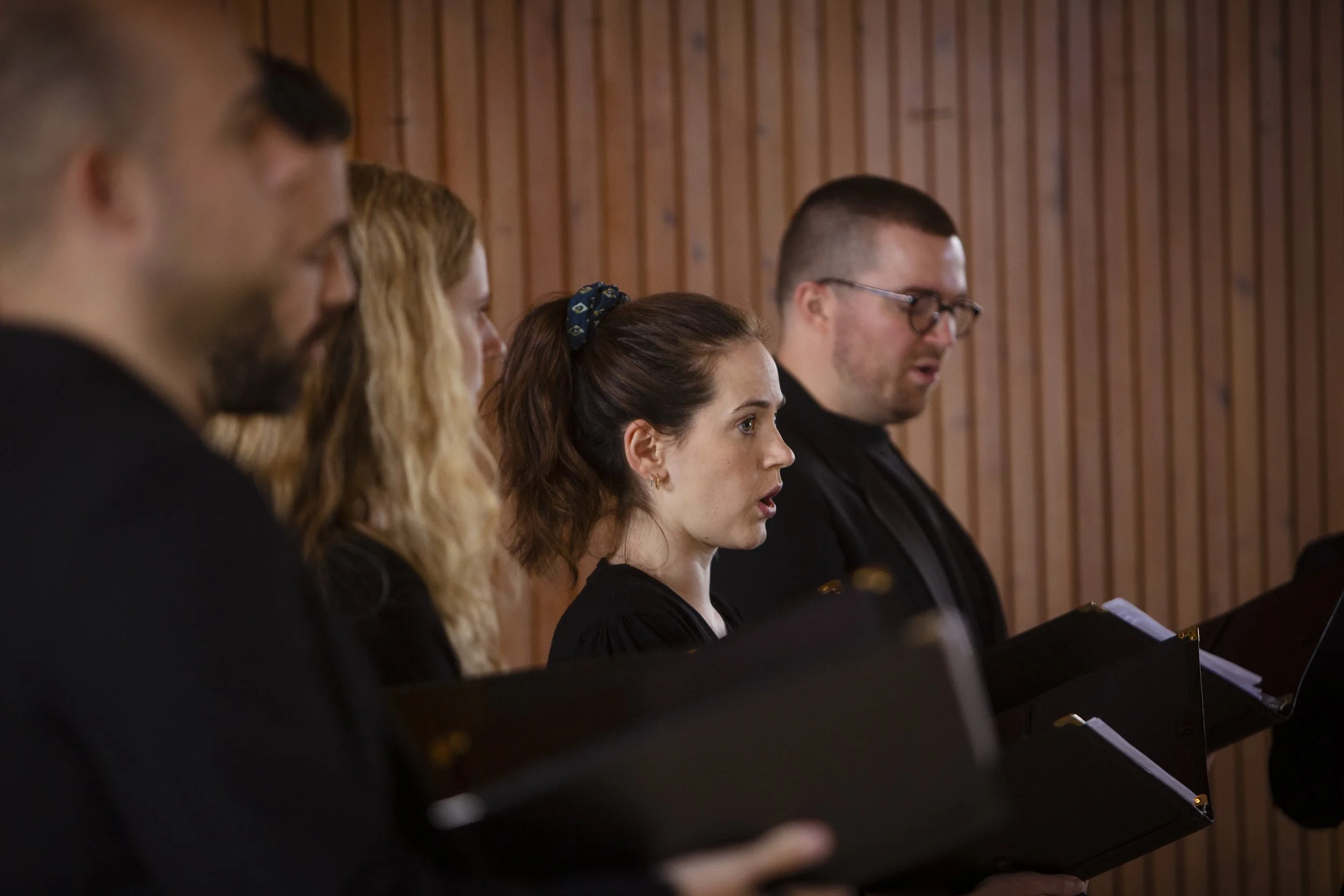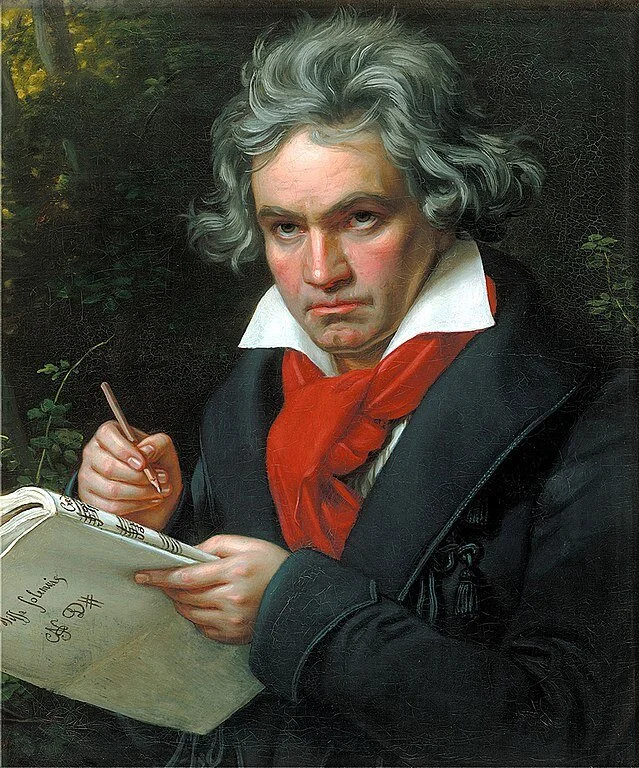programme note
If (like us) you don’t have a CD player anymore, here’s Tom’s programme note for the album.
Invisible Cities is a sequence of sacred choral works and electronic refractions composed by Marco Galvani. The album was initially conceived as a collection of Marco's choral music, selected to showcase his distinct voice and consolidate our relationship with him as one of our Associate Composers. In March 2020, everything changed, and we had to postpone our original recording sessions.
Suddenly, we were spread all over the UK, not knowing when we would be able to meet, let alone sing together. We began to reflect on how best to reimagine the project to address the extraordinary circumstances of the pandemic and its paralysing effect on society the world over. During this time, certain passages of text from the repertoire began to take on fresh significance. In particular, the famous line from the Lamentations of Jeremiah: 'Quomodo sedet sola civitas plena populo' / 'How lonely lies the city that was full of people'.
As cities around the world fell silent, we were reminded of Italo Calvino's novel Invisible Cities, with its fantastical places and meditations on humanity - vividly described by Marco Polo to the ageing Emperor Kublai Khan. Connections between people - real or imagined - are a recurring theme in the novel and something we wanted to draw on as we contemplated the album anew.
The recording sessions in October 2020 were the first time the choir had sung together in person in several months and a timely reminder of the power of a cappella choral music. Our aim was to invest the music with a sense of longing and passion - giving voice to feeling in a time of social isolation.
There runs an invisible thread that binds one living being to another for a moment, then unravels, then is stretched again between moving points as it draws new and rapid patterns so that at every second the unhappy city contains a happy city unaware of its own existence.
The sequence is built around Marco's setting of the Lamentations. Originally commissioned by Jeremy Summerly for The Queen's College Chapel Choir in 2013, they exemplify his distinct brand of polyphony mixed with passages of stasis and rich chordal textures. We first performed the set at the 2016 Passiontide at Merton festival in Oxford and have wanted to record it ever since. Throughout, Marco explores modal harmony with each tonal center derived from the chant passages that open the two parts. This Calvino-like structural device ties the whole set together, underpinning the surface textures with a subtle yet steady harmonic trajectory.
Drawing on famous settings by composers such as Thomas Tallis and Alonso Lobo, Marco gives considerable space to the Hebrew letters that punctuate the verses. Each one is distinct in texture and colour, and yet they all reside in the same dimension - a timeless space above and beyond the plane of the more descriptive passages. These passages form the basis for the four electronic tracks on the album which frame the choral pieces, drawing threads between them and providing space for reflection.
Between the two parts of the Lamentations is Ubi caritas, with its uplifting message of charity and love. Marco's setting stems from the plainsong chant which is presented in a series of variations punctuated by more declamatory passages. With its reserved sense of optimism, this piece represents the importance of community and hope in times of fear and uncertainty.
Marco Polo describes a bridge, stone by stone.
“But which is the stone that supports the bridge?” Kublai Khan asks.
“The bridge is not supported by one stone or another,” Marco answers, “but by the line of the arch that they form.”
Kublai Khan remains silent, reflecting. Then he adds: “Why do you speak to me of the stones? It is only the arch that matters to me.”
Polo answers: “Without stones there is no arch.”
One of the core questions posed by this album is how sacred texts can speak to us today, particularly beyond performance in religious contexts and Christian spaces. The middle section of the sequence features settings of three Marian texts, each with a strong sense of devotion to the queen and gate of heaven. It is this idea of a celestial portal that gives this triptych its structural role in the wider context of the sequence, forming the central phase with two connected but independent worlds before and after.
Traveling, you realize that differences are lost: each city takes to resembling all cities, places exchange their form, order, distances, a shapeless dust cloud invades the continents. Your atlas preserves the differences intact: that assortment of qualities which are like the letters in a name.
In the Lamentations, we hear of the destruction of Jerusalem and the plight of those in exile. Super flumina Babylonis is a lament for the lost city, with its remarkable line 'Quomodo cantabimus canticum Domini in terra aliena?' / 'How do we sing the Lord's song in a strange land?', strikingly set here by Marco. Jerusalem has become an invisible city, existing only in the memory of its captive and homeless population. As with the Lamentations, this text resonates today - particularly for refugees fleeing war and persecution around the world, but also in the global context of the pandemic. The closing verses speak of the importance of collective memory - the imagined worlds of the mind's eye.
The final choral work in the sequence is Marco's setting of O sacrum convivium. This text is also about memory and imagination, inspired by the 'sacred banquet' of Holy Communion where the memory of Christ's Passion is renewed, 'the mind is filled with grace, and a pledge of future glory to us is given.' Marco's approach to the text is particularly striking for its slow and steady increase in tempo and energy. Beginning with calm stasis, the music changes gear with each new line of text until the rapturous Alleluia bursts through in cascading melodies in all voice parts before gradually dissipating back to stillness.
The inferno of the living is not something that will be; if there is one, it is what is already here, the inferno where we live every day, that we form by being together. There are two ways to escape suffering it. The first is easy for many: accept the inferno and become such a part of it that you can no longer see it. The second is risky and demands constant vigilance and apprehension: seek and learn to recognize who and what, in the midst of the inferno, are not inferno, then make them endure, give them space.
At time of writing in March 2021, we remain in a liminal phase - caught between two worlds, the past and future simultaneously illusory and unreal. This album is our attempt to capture something of this moment, recorded in the midst of this stretched out 'in between'. We invite you to listen to the sequence in full and for it to be the soundtrack to personal reflection - as Marco Polo observes in Invisible Cities, "it is not the voice that commands the story; it is the ear."
Tom Herring


















